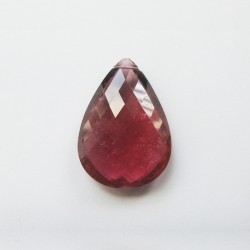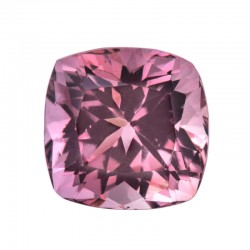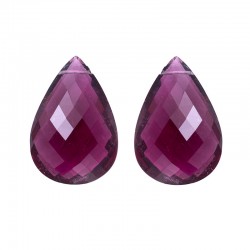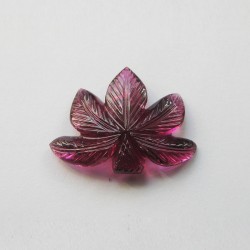Tourmalines are gems with an incomparable variety of colours. The reason, according to an old Egyptian legend, is that the tourmaline, on its long journey up from the centre of the Earth, passed over a rainbow. In doing so, it assumed all the colours of the rainbow. And that is why it is still referred to as the 'gemstone of the rainbow' today.
The name tourmaline comes from the Singhalese words 'tura mali' - 'stone with mixed colours', referring to the colour spectrum of this gemstone, which outdoes that of all other precious stones. Tourmalines occur from red to green and from blue to yellow. They often have two or more colours. There are tourmalines which change their colour when the light changes from daylight to artificial light, and some show the light effect of a cat's eye. No two tourmalines are exactly alike. Magical powers have been attributed to it since ancient times & it is the gemstone of love and of friendship, and is said to render them firm and long-lasting.
In the trade, the individual colour variants have their own names. For example, a tourmaline of an intense red is known as a 'rubellite', tourmaline. In the language of the gemmologists, blue tourmalines are known as 'indigolites', yellowish-brown to dark brown ones as 'dravites' and black ones as 'schorl'. The last mentioned, mostly used for engravings and in esotericism, is said to have special powers with which people can be protected from harmful radiation.
One particularly popular variety is the green Tourmaline, known as a 'verdelite' in the trade. However, if its fine emerald-like green is caused by tiny traces of chrome, it is referred to as a 'chrome tourmaline'. The absolute highlight among the tourmalines is the 'Paraiba tourmaline', a gemstone of an intense blue to blue-green which was not discovered until 1987 in a mine in the Brazilian state of Paraiba. In good qualities, these gemstones are much sought-after treasures today. Since tourmalines from Malawi with a vivid yellow colour, known as 'canary tourmalines', came into the trade, the colour yellow, which was previously very scarce indeed, has been very well represented in the endless spectrum of colours boasted by the 'gemstone of the rainbow'.
Yet the tourmaline has even more names: stones with two colours are known as bicoloured tourmalines, and those with more than two as multicoloured tourmalines. Slices showing a cross-section of the tourmaline crystal are also very popular because they display, in a very small area, the whole of the incomparable colour variety of this gemstone. If the centre of the slice is red and the area around it green, the stone is given the nickname 'water melon'.
Tourmalines are found almost all over the world. There are major deposits in Brazil, Sri Lanka and South and south-west Africa. Other finds have been made in Nigeria, Zimbabwe, Kenya, Tanzania, Mozambique, Madagascar, Pakistan and Afghanistan. Tourmalines are also found in the USA, mainly in California and Maine. Although there are plenty of gemstone deposits which contain tourmalines, good qualities and fine colours are not often discovered among them. For this reason, the price spectrum of the tourmaline is almost as broad as that of its colour.
In the fascinating world of gemstones, the tourmaline is very special. Its high availability and its glorious, incomparable colour spectrum make it one of our most popular gemstones..
R.M.Shah Ltd.
Knowledge, Integrity & Service.




-250x250.jpg)
